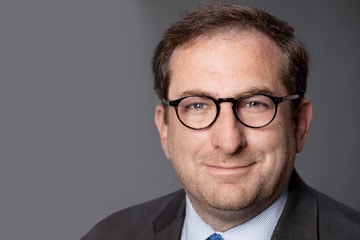The dean of Osgoode Hall Law School says accessibility for students and reconciliation with Indigenous peoples are key goals for the school in its strategic plan stretching until 2020.
Lorne Sossin says the school has identified five key areas of focus for its newest strategic plan, which reflects discussions with students, staff, faculty and alumni.
“On accessibility, we really saw it as something that is part of this outward focus of the law school, to really ensure we’re getting our financial barriers reduced to the extent we can, for ensuring our communities are inclusive, [that] no one’s pressed up against the window looking in on a great legal education if they want one and are eligible for one,” says Sossin.
The law school at York University has about 900 full-time students, 300 part-time graduate students and 100 to 150 full-time graduate students.
In the newest strategic plan unveiled last month, the school identified three goals it will continue to work on — community engagement, experiential education and research intensification. Now, the other two goals have been added, says Sossin.
“We saw accessibility and reconciliation through a really holistic lens as we added them to the list of those pillars on which we all stand,” says Sossin.
One of the ways the school is promoting accessibility is the
Income Contingent Loan Program, which Sossin says is “far and away our most significant measure to counter” high debts and high tuitions.
The program is for students in the 10-year period following their graduation, and is designed so that a graduate pays back the debt in a way that reflects their income.
“[It] features students who get a loan from the law school to cover the entirety of their tuition — that’s a mixture of bursary and loan — and then the loan portion is repayable after they graduate, if their income is over $80,000 a year, and there’s some [income-measured payback] between $60,000 to $80,000, and if they make less than $60,000, the loan is forgiven in its entirety,” says Sossin.
Sossin says the program helps with addressing “career choice anxiety.”
“If [during] this debt, you can’t go and join an international human rights practise or do clinical work because you need a higher salary, this is a way in which the law school can have your back,” he says.
The program is available to five students in the graduating class of 2018 and another five in the graduating class of 2019, and was initially designed to cover 25 students in its five-year pilot. Sossin says the new strategic plan reflects hopes the program will grow.
“It’s an example of something that we felt we could do, and needed to do, to counter this status quo where tuition keeps going up, students keep going into more debt with credit lines, leads to more anxiety, more limits of career choice and limits, ultimately, who is going to come into the pool to apply for law school,” he says.
The school also has a flex-time initiative, which it describes as a way “to make the Law School more accessible to students who face barriers that make participation in the full- time Juris Doctor program difficult or impossible, such as work or care responsibilities, financial restrictions or health concerns.”
Tuition for domestic students doing their Juris Doctor was $24,995.98 in 2016-2017, and $25,820.98 for international students. Students must pay $977.42 in ancillary fees, as well.
The dean noted Osgoode is “not the most expensive law school in town.”
“[U of T] often gets a lot more of the press, negative and sometimes positive, around tuition, just because it’s at the forefront, and we’re not certainly far behind, second most expensive in the country, but it’s certainly a top of mind issue that helped drive our focus on accessibility. . .,” he says.

